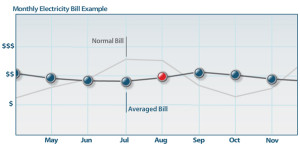 With all of the emphasis on reducing energy costs, it would seem that using programmable thermostats should save you money. It turns out that programmable thermostats are just like anything else used by consumers. If used correctly they will save you some money in terms of heating or cooling costs. But in the wrong hands, a programmable thermostat can actually cost you more for heating and cooling your home!
With all of the emphasis on reducing energy costs, it would seem that using programmable thermostats should save you money. It turns out that programmable thermostats are just like anything else used by consumers. If used correctly they will save you some money in terms of heating or cooling costs. But in the wrong hands, a programmable thermostat can actually cost you more for heating and cooling your home!
The Right Way to Program a Thermostat
Turns out that the rule of thumb is to set the temperature for a period of 8 hours and leave it there. If you do this every day then you probably will save money. For example, when you go to bed, there is an 8 hour stretch were you can turn the heat down for heating purposes and reduce your energy costs. The same thing when you go to work. However if someone is constantly fiddling with the thermostat, and adjusting it every few hours either manually or by programming, you can end up using more energy than necessary.
A 1978 research paper (“Energy Savings through Thermostat Setbacks” by Nelson and MacArthur) confirmed basic physics. On average, if you turn the thermostat down by one degree Fahrenheit for eight hours every night, you’ll use about 1% less energy. (So, if you turn the temperature down by 10 degrees every night, you’ll use about 10% less energy.) But note that you’ll see less savings in milder climates (the bigger the difference between indoor and outdoor temperatures, the more you save by adjusting the thermostat) and with electric heat.
The Real Answer About Programmable Thermostats
If you are motivated to reduce your heating and cooling costs then you are going to be setting your thermostat lower to be gin with when heating and higher when cooling and you are going to leave the setting alone. You do not need a programmable thermostat to do this. Rather it is all about what you as an individual and your family want the temperature in your home to be.
A programmable thermostat will help you manage the temperature better, but it alone will not save you money. If people in your family are constantly adjusting the temperature then you are going to pay more for energy. It is just that simple. No thermostat is going to change this unless you put it under lock and key. You might end up with a revolt in your family if you actually try this.
There were a number of studies that have been conducted that proved this point. We included an excerpt here for readers . See below.
If your motivation is to reduce your energy costs and save money, consider a programmable thermostat as a tool to help you accomplish your goals. By itself they will not save money. You need to program these thermostats to adjust the temperature in the same manner that you would have manually adjusted the temperature on a manual thermostat. Set the temperature once for an 8 hour period and leave it there.
Turning down the temperature for 8 hour periods will definitely save you money , only if you leave it and do not play with it.
Where’s the savings?
In 2007, RLW Analytics prepared a report for GasNetworks, a New England-based energy company. “Validating the Impact of Programmable Thermostats” found that using an Energy Star-certified programmable thermostat produced an average savings of about “6.2% of total household annual natural gas consumption”. Those who installed programmable thermostats into older heating systems saved an average of 6.8%.
Note: The New England study also found that people who micromanage their manual thermostats use more energy. This was in comparisonto those who just leave them at predefined points for longer periods of time.
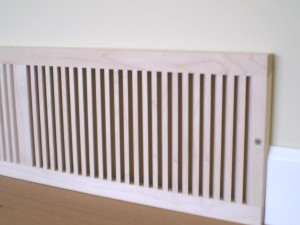
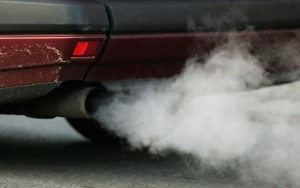
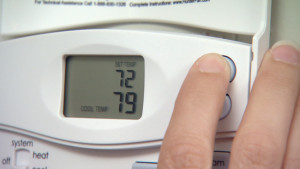
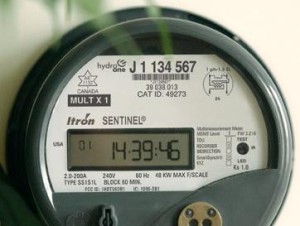
 you spend the money on a new door it may be worth it to try to draft proof the existing door first! New doors can cost up words of $1000 to $2000! Why not spend $10 and try draft proofing your door first.
you spend the money on a new door it may be worth it to try to draft proof the existing door first! New doors can cost up words of $1000 to $2000! Why not spend $10 and try draft proofing your door first.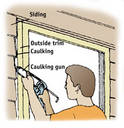 On a cold day, or even on a windy day, try turning on any indoor exhaust fans you have to draw warm air out of the house and cold air in. Use your fingers or a piece of paper held to the area you are checking to feel for any strong drafts in the molding and around the door; seal them as well. This should make a big difference not only to the drafts. If you do not have insulation in the wall around the door you may want to reconsider how you will seal the doorway and how you can inject insulation around the door.
On a cold day, or even on a windy day, try turning on any indoor exhaust fans you have to draw warm air out of the house and cold air in. Use your fingers or a piece of paper held to the area you are checking to feel for any strong drafts in the molding and around the door; seal them as well. This should make a big difference not only to the drafts. If you do not have insulation in the wall around the door you may want to reconsider how you will seal the doorway and how you can inject insulation around the door. gaps in the lead. Draft proofing a door with an old window in it really starts with the window.
gaps in the lead. Draft proofing a door with an old window in it really starts with the window. Even if you use central heating systems such as gas or oil, you still want to give this some consideration. Not only do you reduce the amount of gas or oil that you use, you also reduce the amount of electricity you use running the fan.
Even if you use central heating systems such as gas or oil, you still want to give this some consideration. Not only do you reduce the amount of gas or oil that you use, you also reduce the amount of electricity you use running the fan.